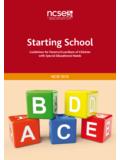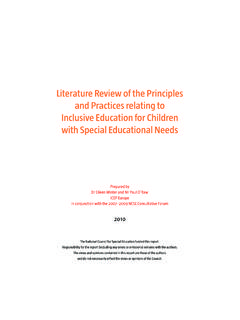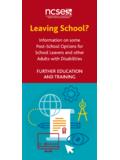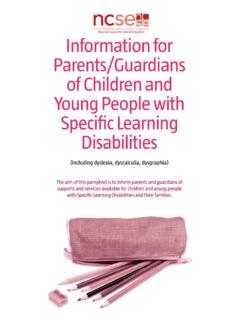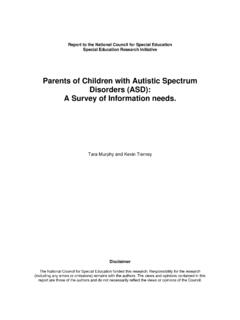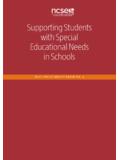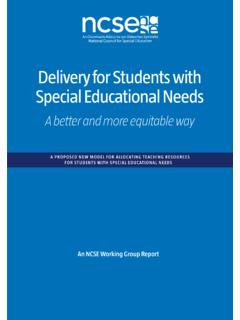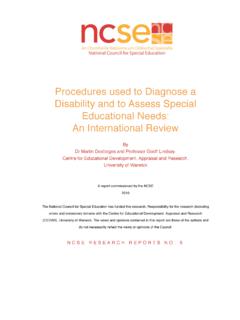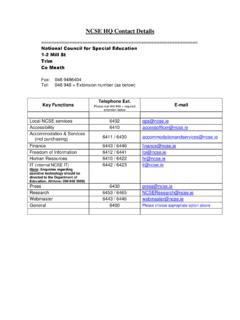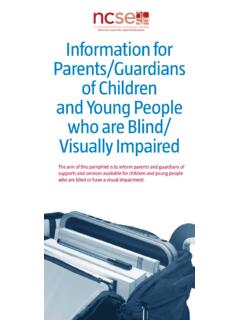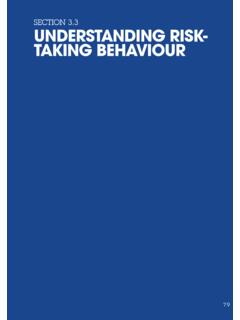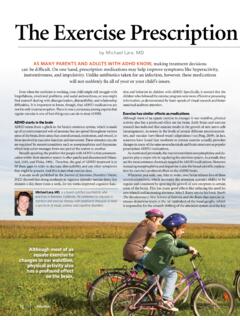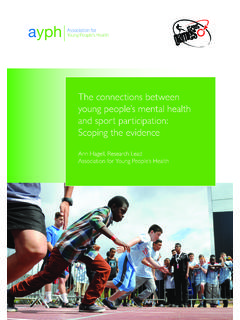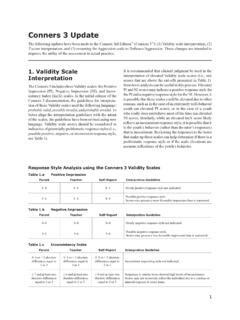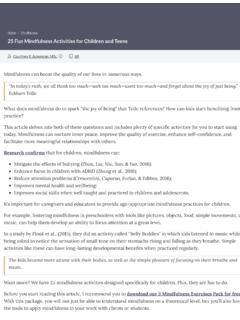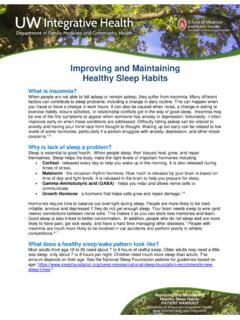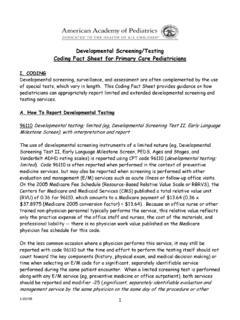Transcription of GUIDELINES ON THE INDIVIDUAL EDUCATION PLAN PROCESS
1 MAY 2006 GUIDELINES ON THE INDIVIDUAL EDUCATION PLAN PROCESSiiiTABLE OF CONTENTSF oreword vAcronyms ixGlossary xi Introduction 1 Chapter 1 The EDUCATION for Persons with Special Educational Needs Act 2004: An Outline 3 Chapter 2 Planning to develop an IEP 11 Gathering Information 12 Consulting with Others 18 Convening and Conducting IEP Planning Meetings 22 Chapter 3 Writing, Implementing and Reviewing the IEP 27 Contents of the Plan 27 Implementing the Plan 39 Review and Revision of the Plan 40 Chapter 4 Transition Requirements in the IEP 47 Planning for Transition 47 Principles Governing Transition 49 Particular Stages of Transition 50 Chapter 5 Parental and Student Involvement 53 Involving Parents 53 Student Participation 55 Chapter
2 6 Roles and Responsibilities 57 Roles and Responsibilities under the ESPEN Act, 2004 57 Other Roles and Responsibilities 62 Annexes 54 Annexes 65 Annex 1 Membership of the IEP Expert Group 65 Annex 2 Examples of INDIVIDUAL EDUCATION Plans 66 MAY 2006 GUIDELINES ON THE INDIVIDUAL EDUCATION PLAN PROCESSvFOREWORDThe value of the preparation and implementation of INDIVIDUAL EDUCATION Plans (IEPs) for children with special educational needs is internationally accepted and is underpinned by law in many countries including the USA, Australia, Canada, New Zealand and the UK.
3 While there is not as yet a legal requirement to provide IEPs for children in Ireland, many teachers of children with special EDUCATION needs have been using IEPs in various forms and guises in their work with these children and many have developed considerable expertise in this the establishment of the National Council for Special EDUCATION (NCSE), and the passing of the EDUCATION for Persons with Special Educational Needs Act, 2004 (EPSEN) which set out a future statutory framework for the preparation and implementation of such IEPs in this country, the Council had many requests from parents, teachers and schools to prepare and issue national GUIDELINES on IEPs which would underpin a uniform national approach to work already in hand.
4 Although the timetable for the implementation of the provisions of the EPSEN Act, 2004 is yet to be agreed, and the resource and training needs have yet to be identified and put in place, the Council considered that it should address the current needs for guidance on this issue. The issuing of IEP GUIDELINES at this stage will also provide an opportunity for teachers, parents and schools to become familiar with the PROCESS well in advance of the terms of the Act coming into force. The timing of the commencement of the statutory IEP regime and the issue of resources needed for implementation will be addressed by the Council in the Implementation Plan for the EPSEN Act, 2004, which it will submit to the Minister for EDUCATION and Science in October 2006.
5 The Council is pleased to present this document as a guide to good practice in relation to the preparation, implementation and review of IEPs. The work has been undertaken on our behalf by a group of Irish experts in the area (for a list of those involved see Annex 1) and we are extremely grateful to them for their efforts. We are confident that the GUIDELINES reflect the expertise that was brought to bear on the exercise by the Expert Group and also that the GUIDELINES represent national and international best practice. The GUIDELINES in this document present the main features of the IEP PROCESS as outlined in the EPSEN Act, 2004.
6 The reader is taken through the steps that are needed to plan, gather information and to write the IEP. The GUIDELINES present a checklist of the essential elements required for an IEP and it is intended that these will form the basis for good practice in the future. The document also presents a series of worked exemplars, based on the real experiences of schools and students. In GUIDELINES ON THE INDIVIDUAL EDUCATION PLAN PROCESSviMAY 2006presenting these exemplars, the NCSE would like to emphasise the importance of the quality of thinking that goes into the PROCESS rather than simply looking at the written document.
7 In presenting this work, the NCSE emphasises that the IEP has an educational purpose; it provides evidence of the agreed special educational interventions and other supports to be provided for the child together with recording parent, student and teachers professional views. An IEP also records the strategies that need to be used to enable a child to progress in the EDUCATION system. These GUIDELINES provide the tools necessary to ensure that a comprehensive approach can be level of detail in each of the exemplars varies so as to allow for greater flexibility on the part of the school and the teacher.
8 It should be noted that different evaluation measures are also a feature of the exemplars, thereby ensuring that the progress made by the INDIVIDUAL student can be captured in the manner that is most appropriate to that student. It is important to note that the IEP only documents that which is additional to or different from the differentiated curriculum plan that is already happening in the classroom situation. IEPs are not, therefore, a substitute for the curriculum. In this regard, the Council recommends that IEPs are subject to ongoing review so as to ensure that the needs of the INDIVIDUAL child/young person are fully taken into NCSE acknowledges that much of what is required at the level of the INDIVIDUAL school to deliver on these GUIDELINES has to be supported.
9 Such support will include the training of teachers and others. It also appreciates that IEPs require investment of time outside the classroom. In this regard, the Council has commissioned research on the resource requirements needed to implement that part of the EPSEN Act, 2004 that provides for an IEP. It has also undertaken to consult with key stakeholders so as to obtain from them, their views about how this work can best be supported. The NCSE welcomes the views and comments of those consulted and will work to ensure that the question of resources is clearly set out in its Report on the Implementation of the EPSEN Act, 2004, noted earlier.
10 In so doing, it recognises that the full implementation of the provisions of the EPSEN Act, 2004 in relation to IEPs will require a whole school policy and NCSE acknowledges the differences that exist between the Primary and Post-Primary sectors and accepts that the organisational approaches to the management of the IEP PROCESS will be different FOREWORDGUIDELINES ON THE INDIVIDUAL EDUCATION PLAN PROCESSviiMAY 2006in both sectors. Its primary aim in this document is to set out, in a general and non-prescriptive way, good practice in relation to NCSE has not recommended the use of particular information technology at present.
